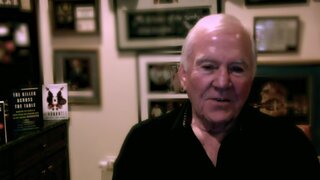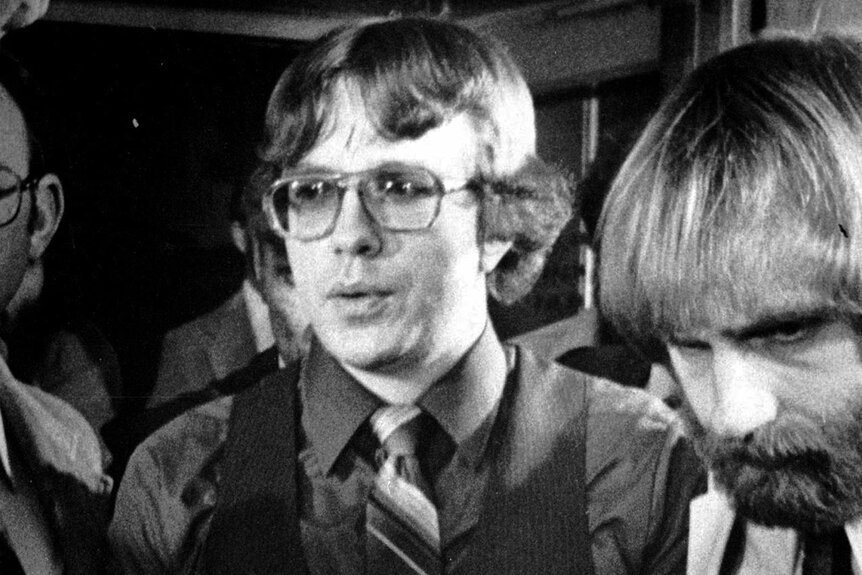Create a free profile to get unlimited access to exclusive videos, breaking news, sweepstakes, and more!
Learn 5 Investigative Terms And Techniques Used By The Real FBI 'Mindhunter' John Douglas In 'The Killer’s Shadow'
Former FBI unit chief John Douglas breaks down some of the methods he used to profile notorious killers.

Retired criminal profiler John Douglas interviewed infamous killers like Richard Speck and cult leader Charles Manson as part of an FBI research program on offenders. His storied career meeting with convicted killers and profiling cases is the inspiration for hit shows like “Mindhunter.”
One challenging case Douglas helped analyze dealt with serial killer Joseph Paul Franklin. Douglas was tasked with creating a profile to help catch Franklin, who was suspected of targeting Black and Jewish people in the late 1970s.
“This was a racist serial killer,” Douglas told Oxygen.com in a Skype interview. “He was just so mobile. No one knew where he was, you know, in the country. So, this was like a mission impossible for me.”
Douglas details the manhunt and Franklin’s trial in his new book “The Killer’s Shadow: The FBI’s Hunt for a White Supremacist Serial Killer.”
Here are five terms or techniques Douglas used while working at the FBI.
1. Stepping Into The Victim’s Shoes
Although the focus for investigators is often solely on perpetrators, Douglas wanted to put himself into the mindset of a victim. This helped him and investigators personalize the case, give them more motivation to seek justice, and get a better understanding of the type of offender they were after, according to “The Killer’s Shadow.”
However, for a case like Franklin’s, viewing crimes from the victim’s perspective and finding a dynamic proved difficult, since the killer used a distanced, “blitz style of attack,” Douglas said.
“Anyone could be a victim with Franklin,” Douglas said. “He was an opportunist. He was always looking for the potential. If he saw a couple, now was the time and he would target them.”
2. Modus Operandi vs. Signature
Modus Operandi, or M.O., refers to how killers carry out their crimes. It’s learned behavior and can change as perpetrators gain more experience, according to Douglas. In Franklin’s case, he was a bank robber, a bomber, and an assassin who used different weapons.
“In his case, victimology is what’s going to link the cases, not the M.O.,” Douglas said.
Franklin was more focused on the result, rather than the act, according to “The Killer’s Shadow.”
"The common thread though, when you analyze it, was he was going after minority groups,” Douglas said.
A killer’s signature is a more commonly known term to describe a ritual repeated by a killer. Oxygen’s show “Mark of a Killer” explores different signatures of serial offenders. Franklin’s “signature” was killing Black people, Jewish people, or bi-racial couples, according to Douglas.
3. Linkage Blindness
Since Franklin crossed state lines and had an ever-changing M.O., linkage blindness posed a possible issue to investigators.
“Linkage blindness is where the police and law enforcement, in general, cannot link cases together because there are dissimilarities within ... the modus operandi,” Douglas said.
Another potential pitfall is that investigators can wind up linking cases that appear similar but are not committed by the same perpetrator, according to Douglas.
Murders committed by the man dubbed the “.22-Caliber Killer” in New York were initially included in a case file Douglas reviewed on Franklin, according to the book. The real killer in that case, Joseph Christopher, largely targeted Black men, but used completely different methods than Franklin. (In two 1980 murders Christopher may have committed, but was never convicted of, the victims' hearts were cut out.)
“When I did the analysis up in Buffalo, I said these shootings have nothing to do with Joseph Franklin because there is a .22 caliber,” Douglas said. “Franklin is using high-powered rifles and as far as the hearts being cut out of the body, no that’s not Franklin.”
Franklin’s “style” was to put distance between himself and victims, Douglas said.
4. Tension Release
Franklin’s demise was partly due to the revealing chats he had with other incarcerated people, Douglas said. The author refers to the act of someone divulging their secrets or confessing crimes to someone they view as a peer after an intense interrogation as “tension release.”
“It’s a way for them to express themselves,” Douglas said. “They like to talk. So, after an interrogation, there’s a good chance that he has to express himself.”
The bureau developed informants and then was able to get them to testify against Franklin at his trial, according to Douglas.
5. Voice Vacuum
Another interview tactic FBI agents deployed on Franklin was called a “voice vacuum.”
Subjects who want to be in control tend to fill lulls in conversation and offer up more information. Douglas advised this to an FBI agent set to interview Franklin, and the tip led to Franklin filling in more details of his crimes.
A “voice vacuum” was a common occurrence in hostage situations and during interviews he conducted with subjects in his FBI research program, according to Douglas’ book.
“The Killer’s Shadow” is available now.




























